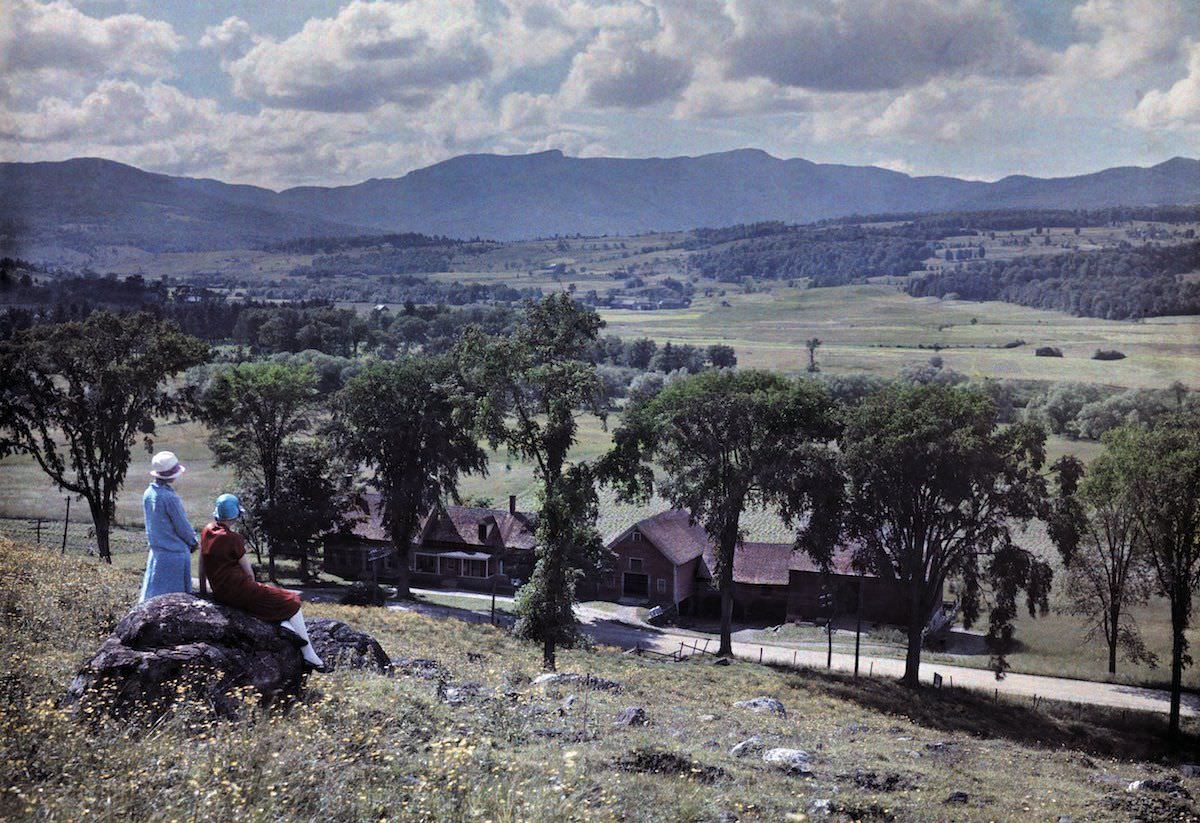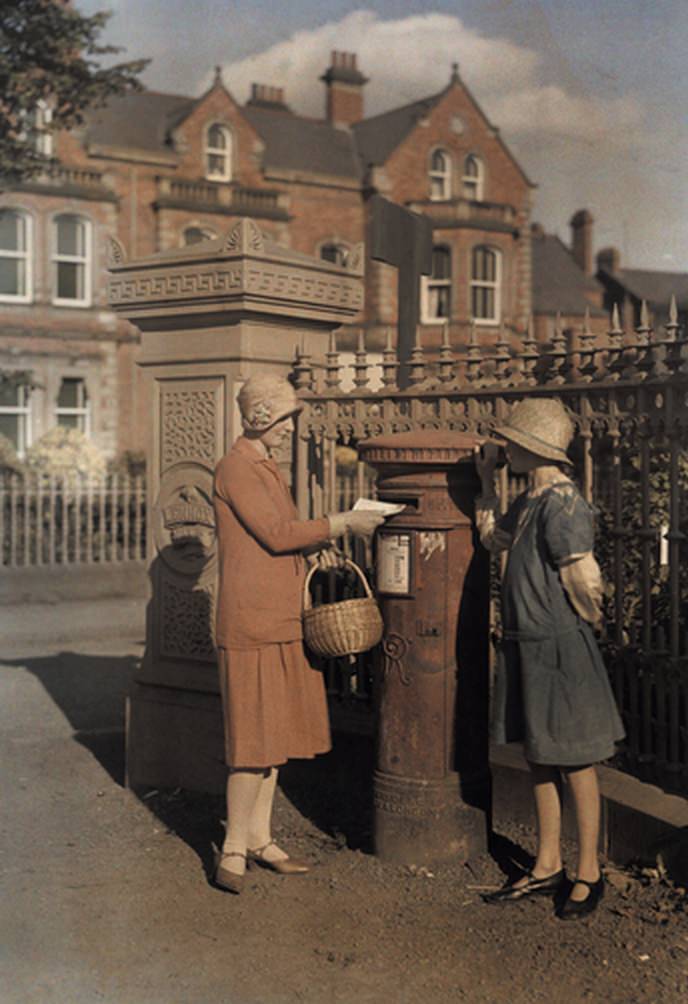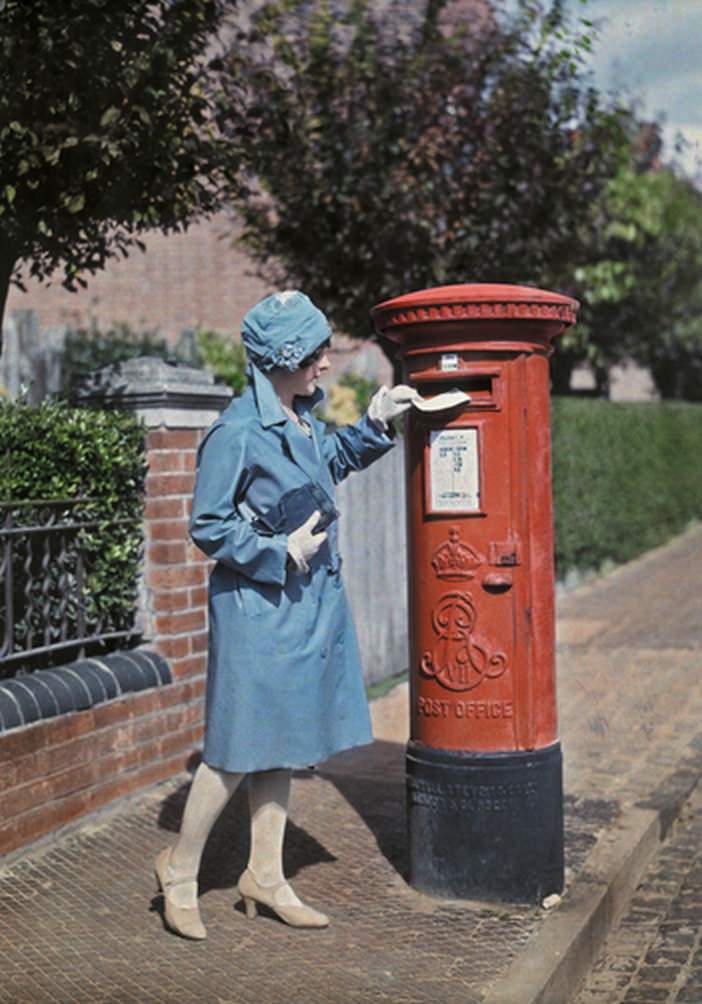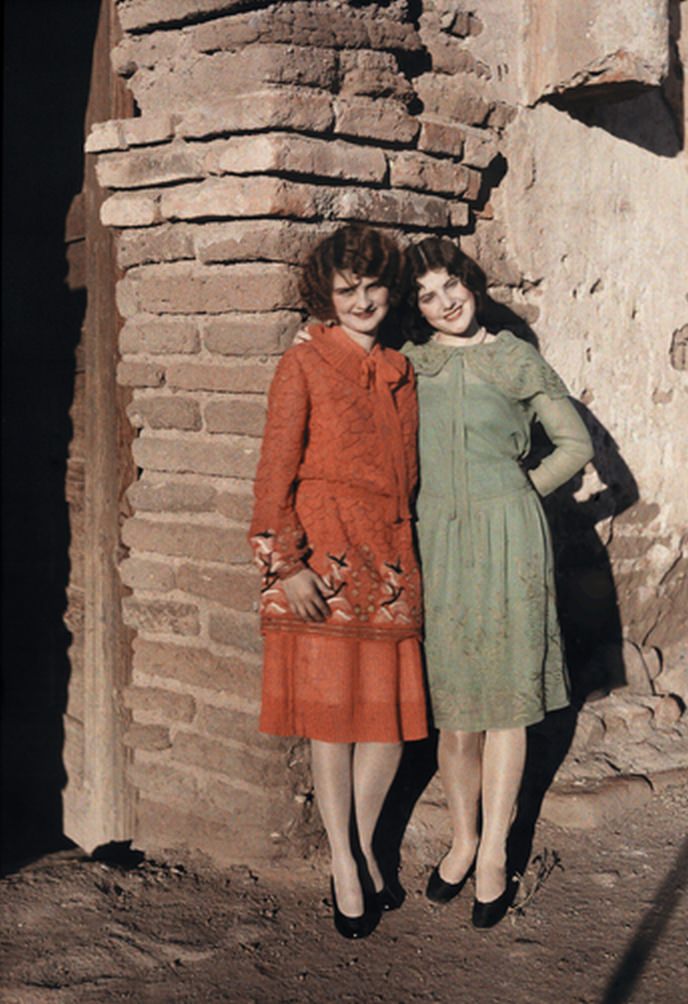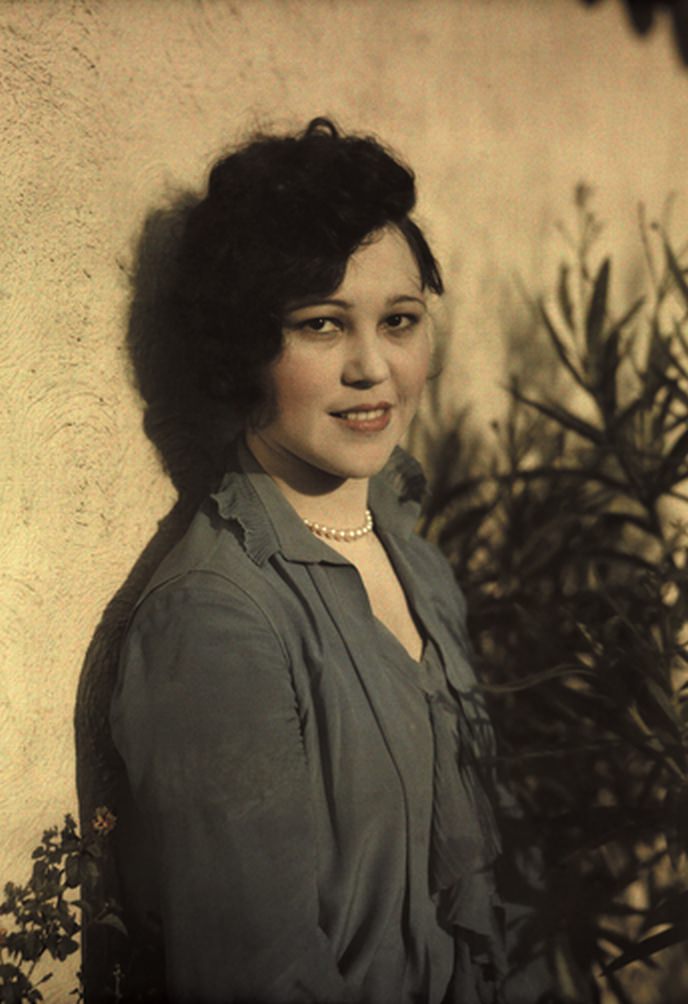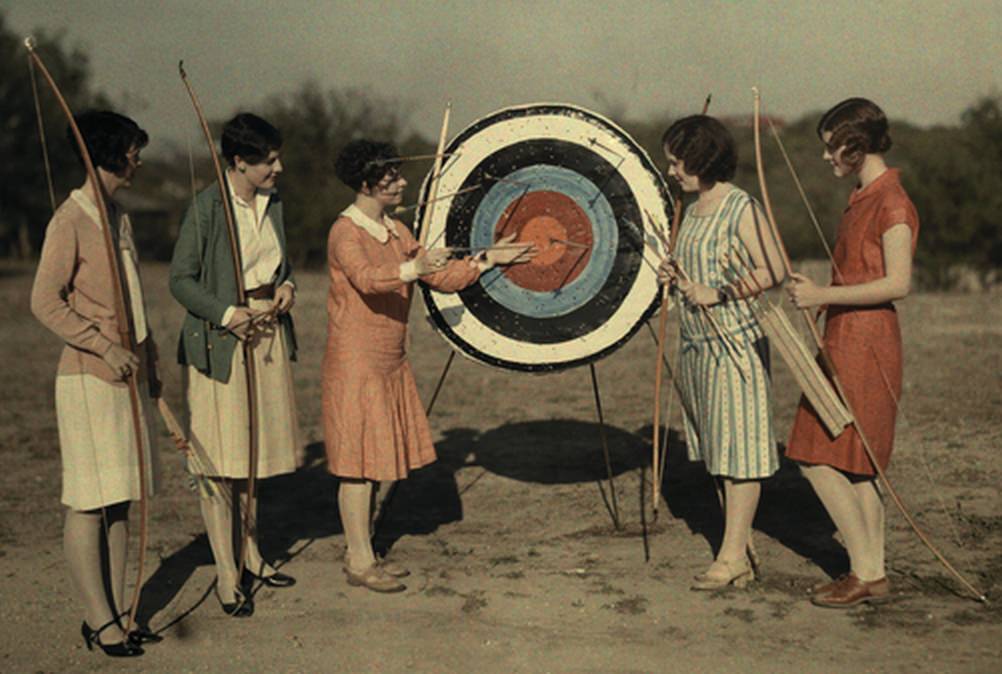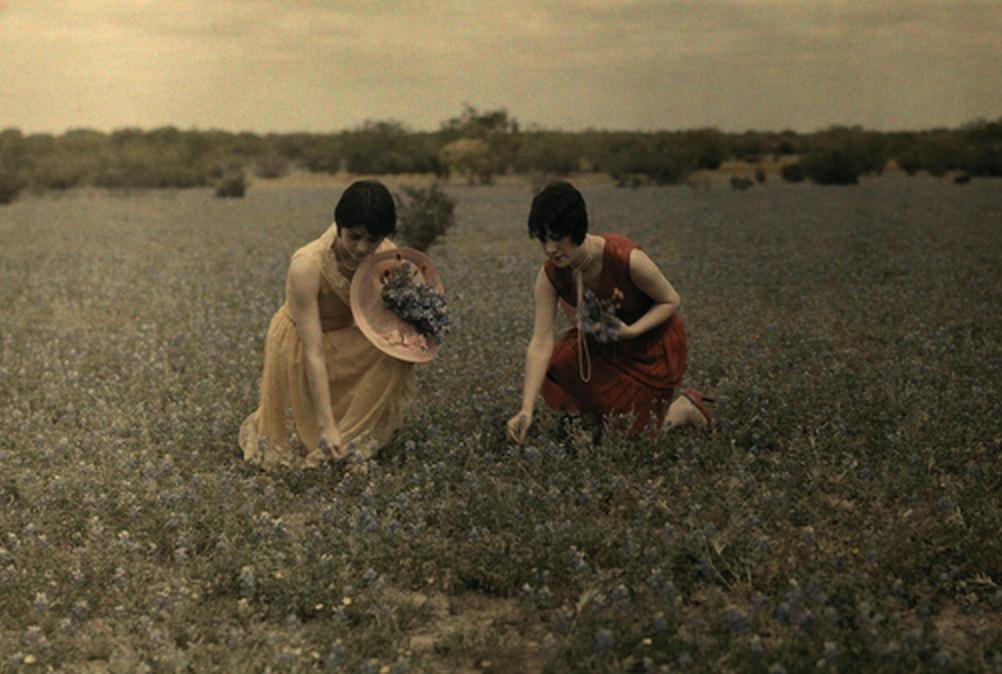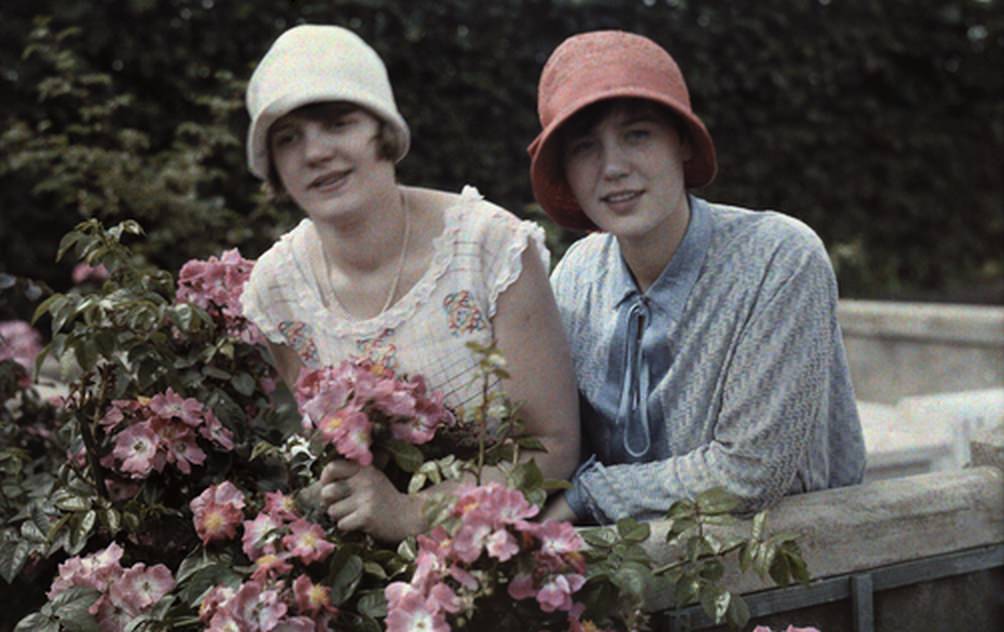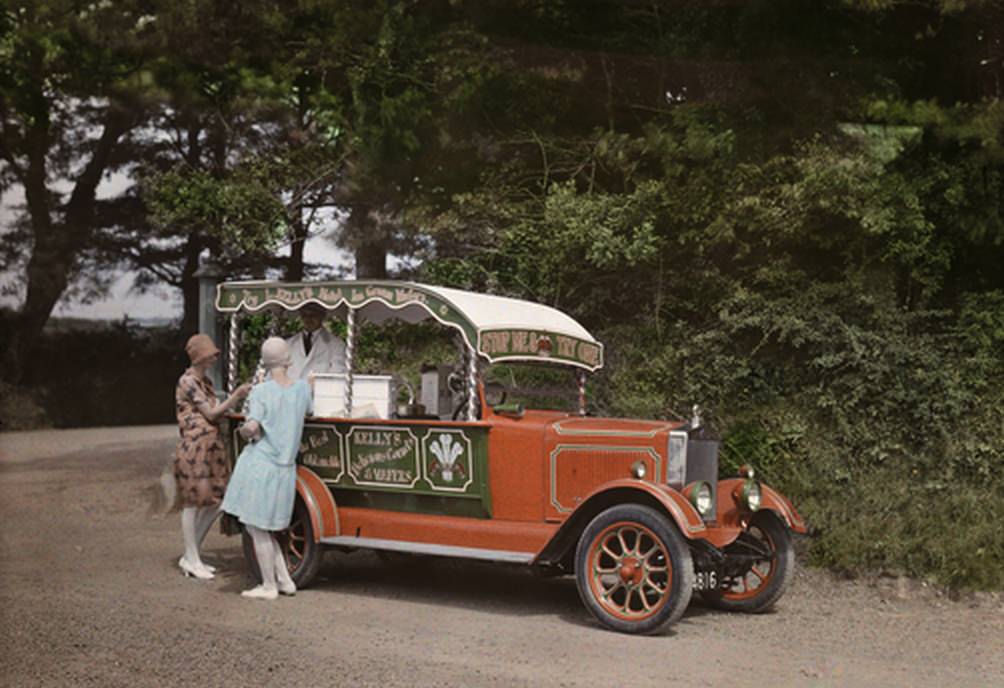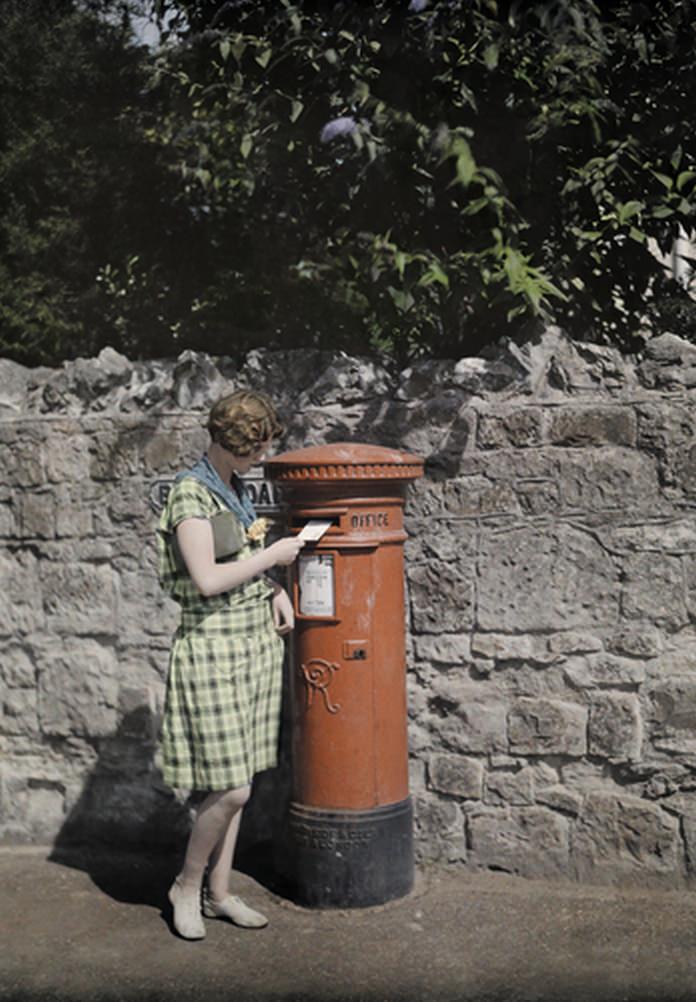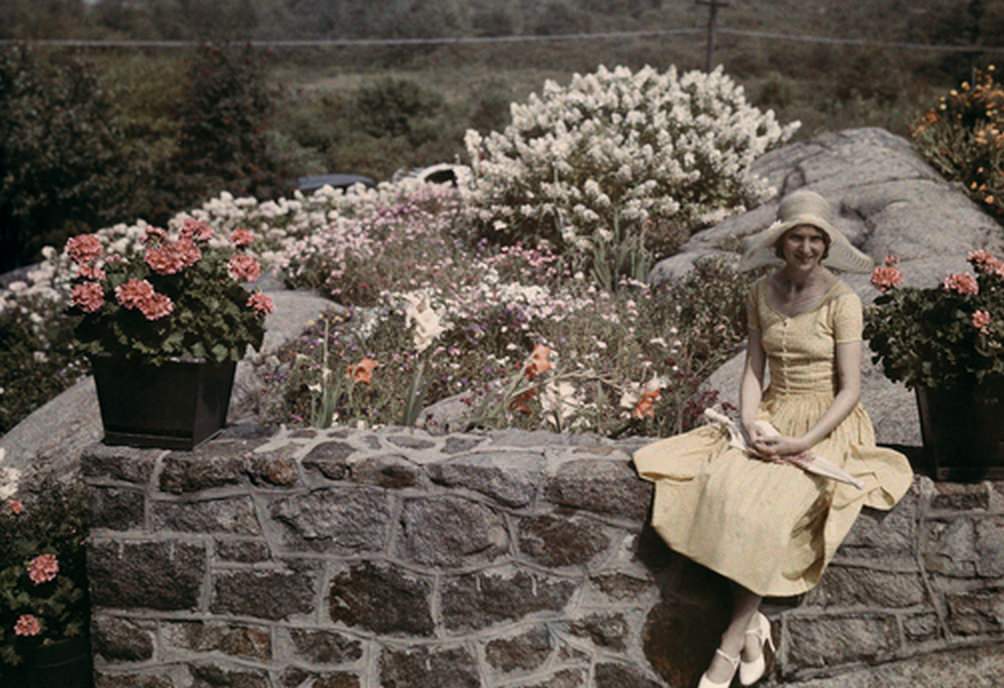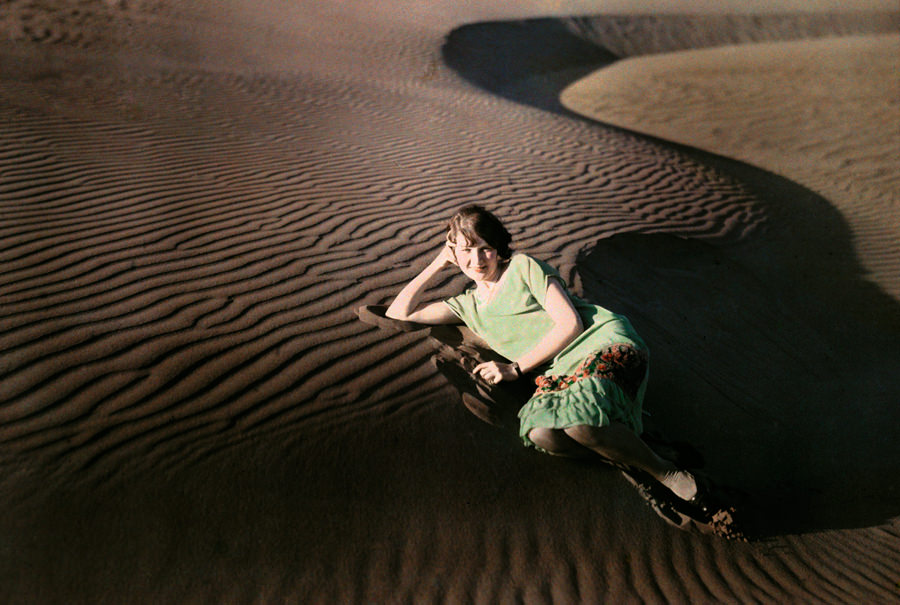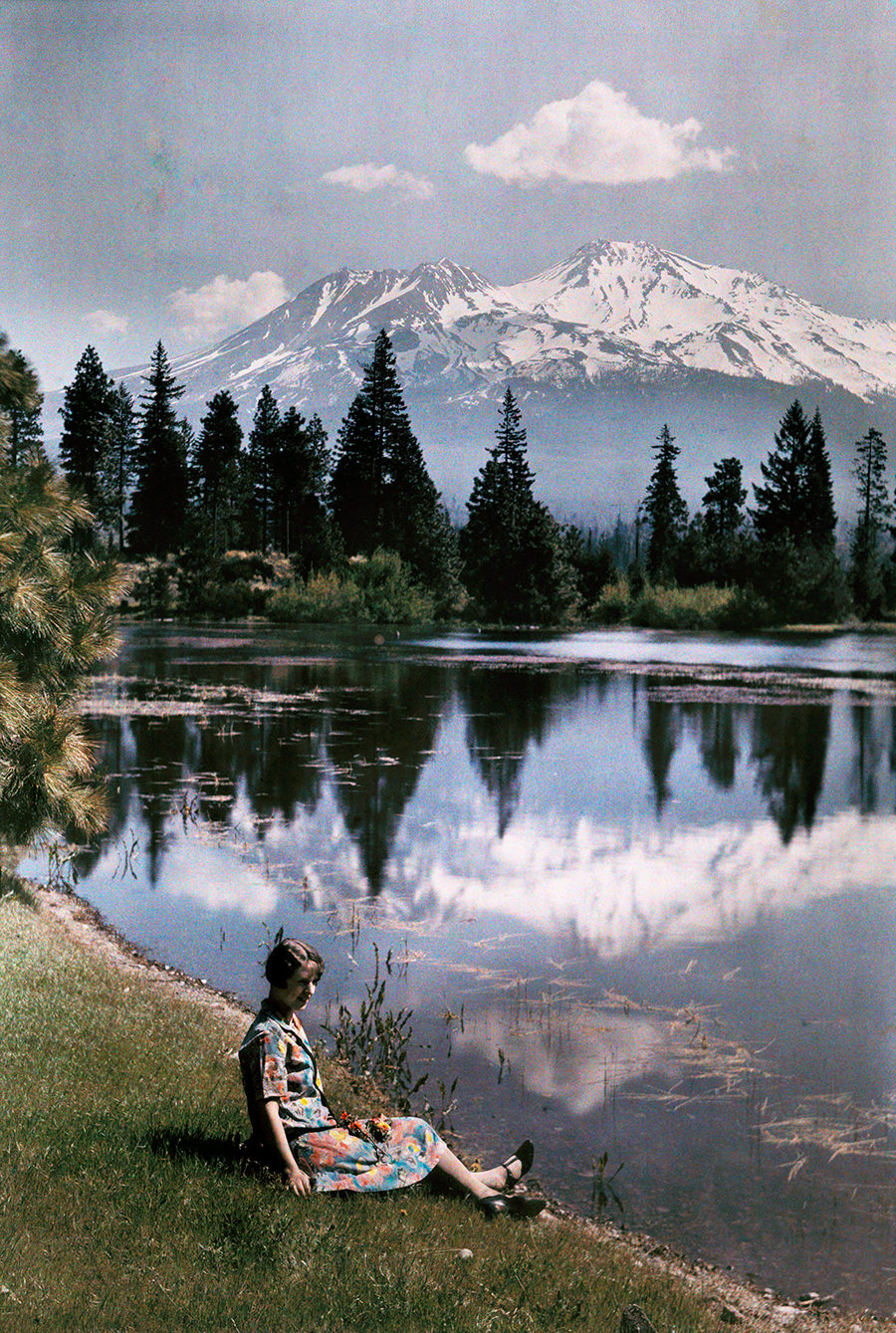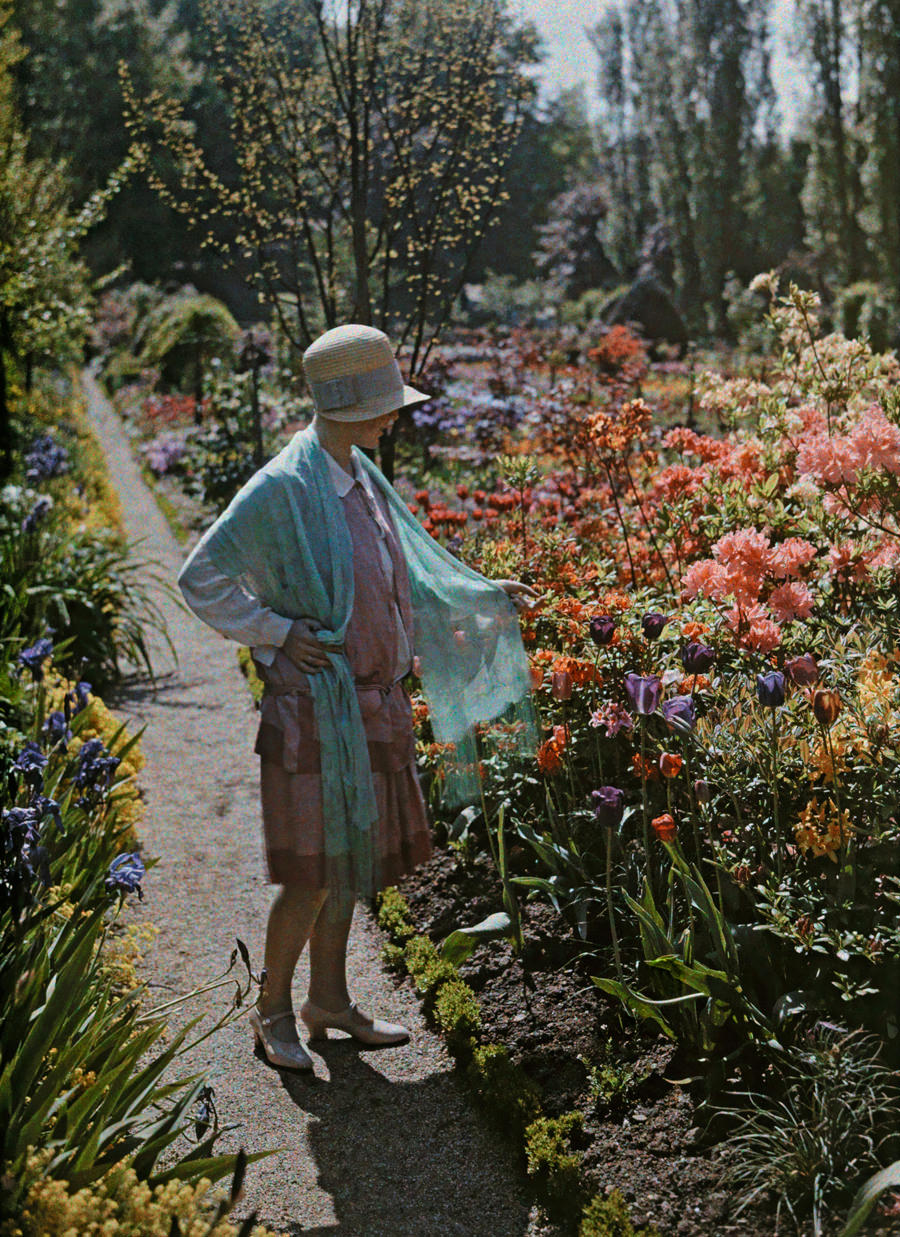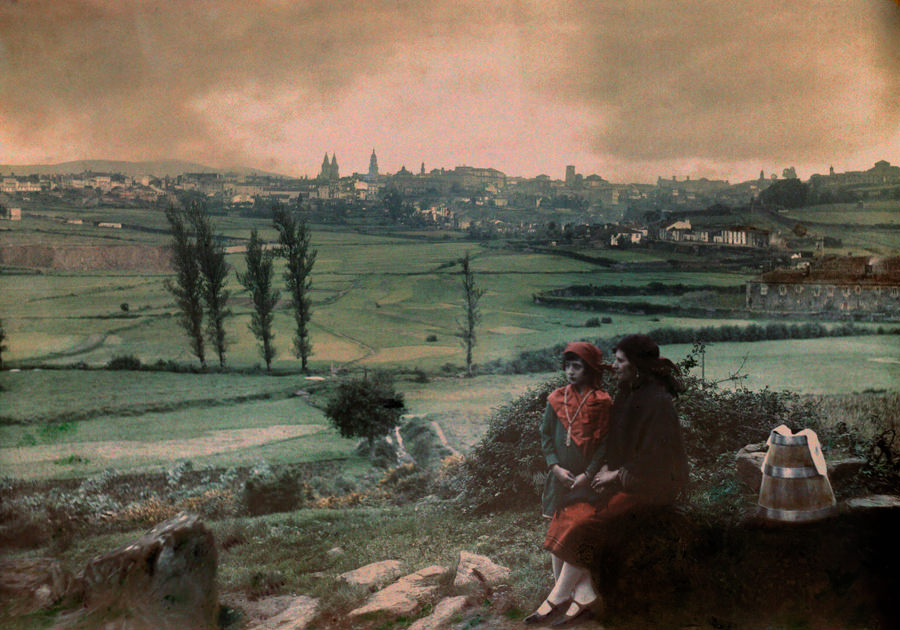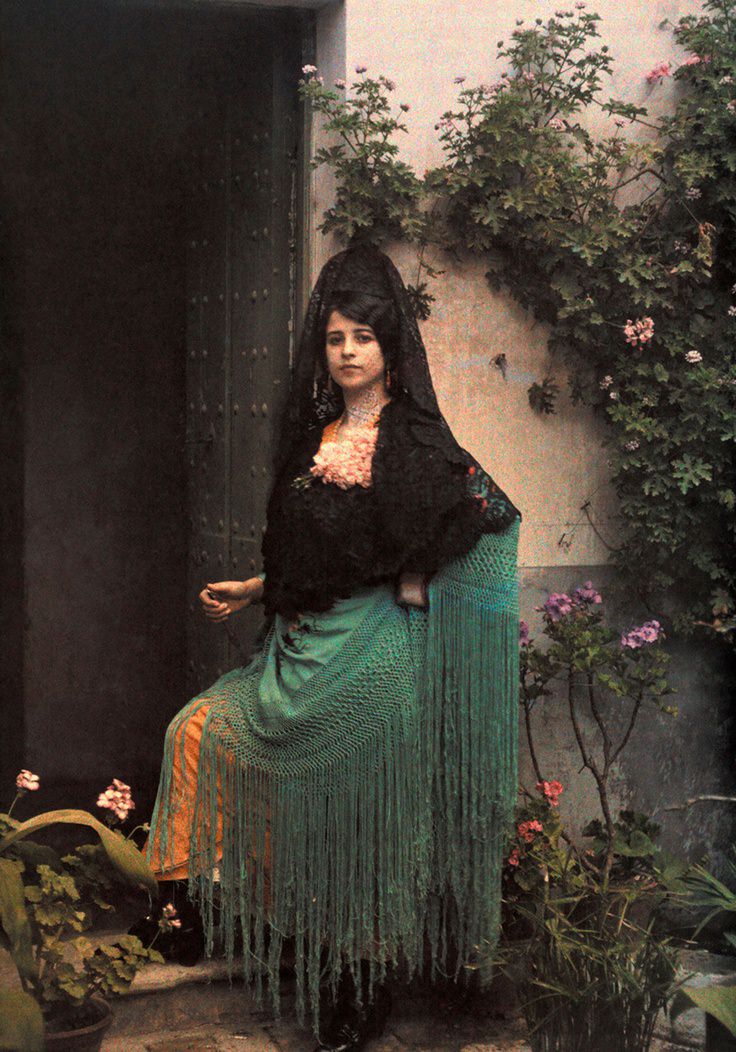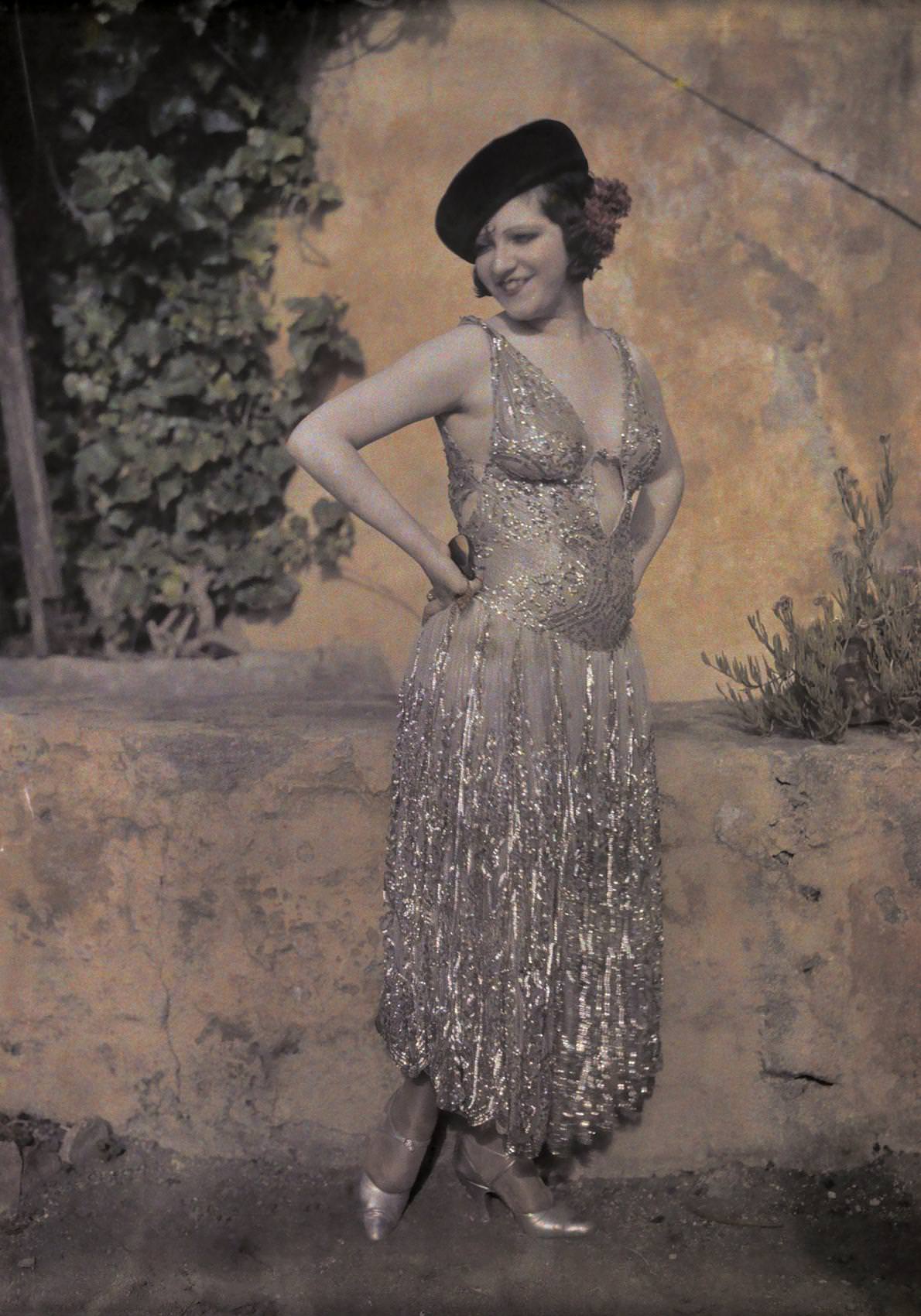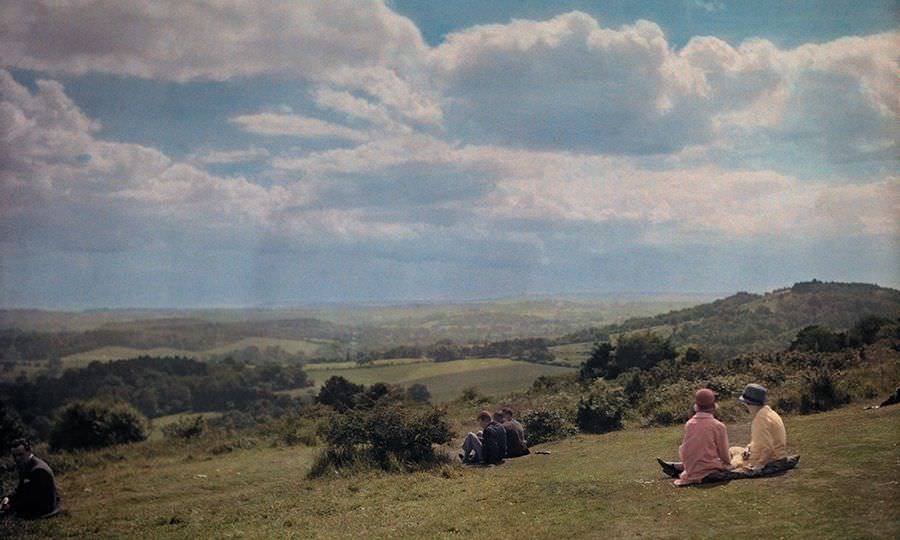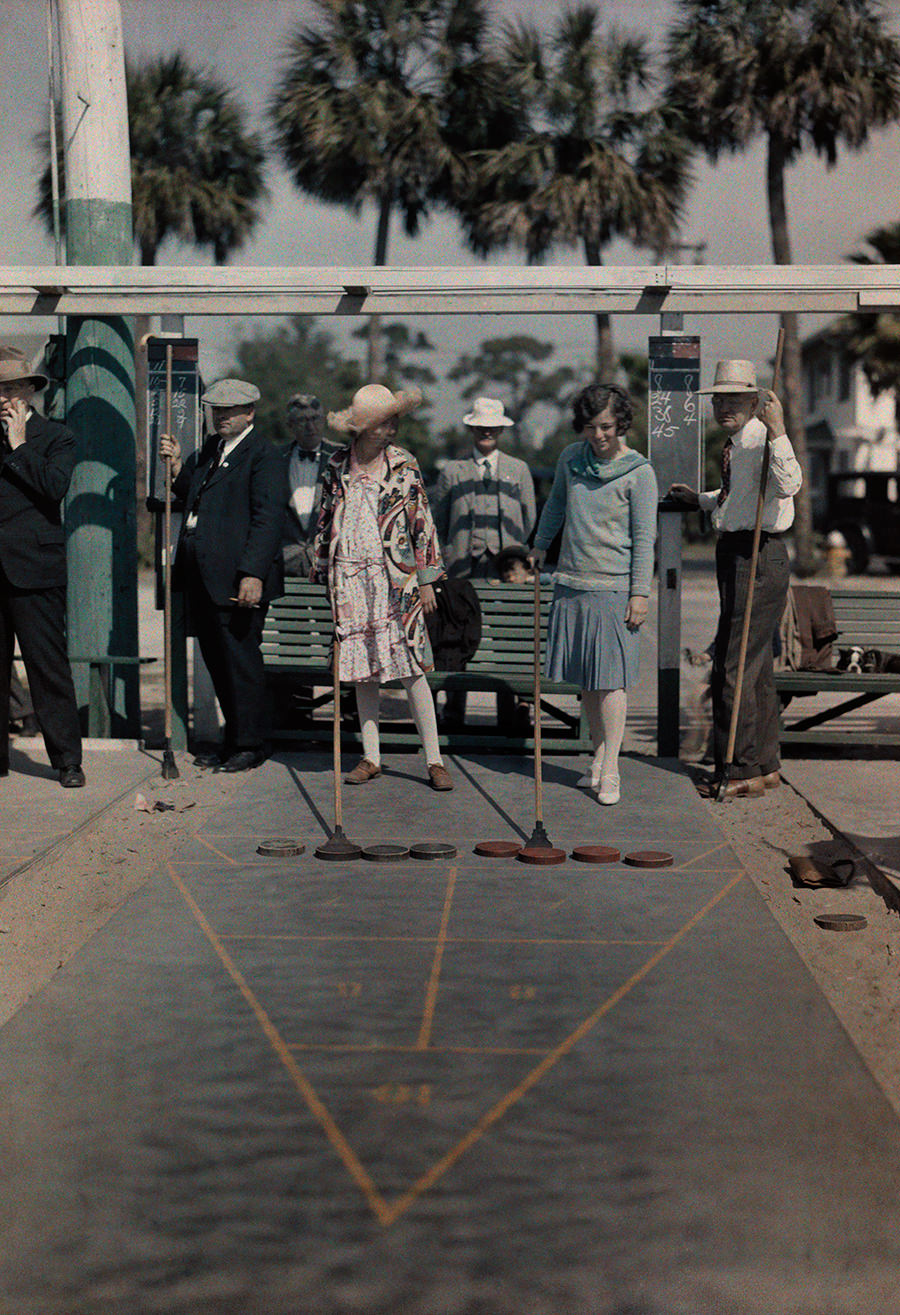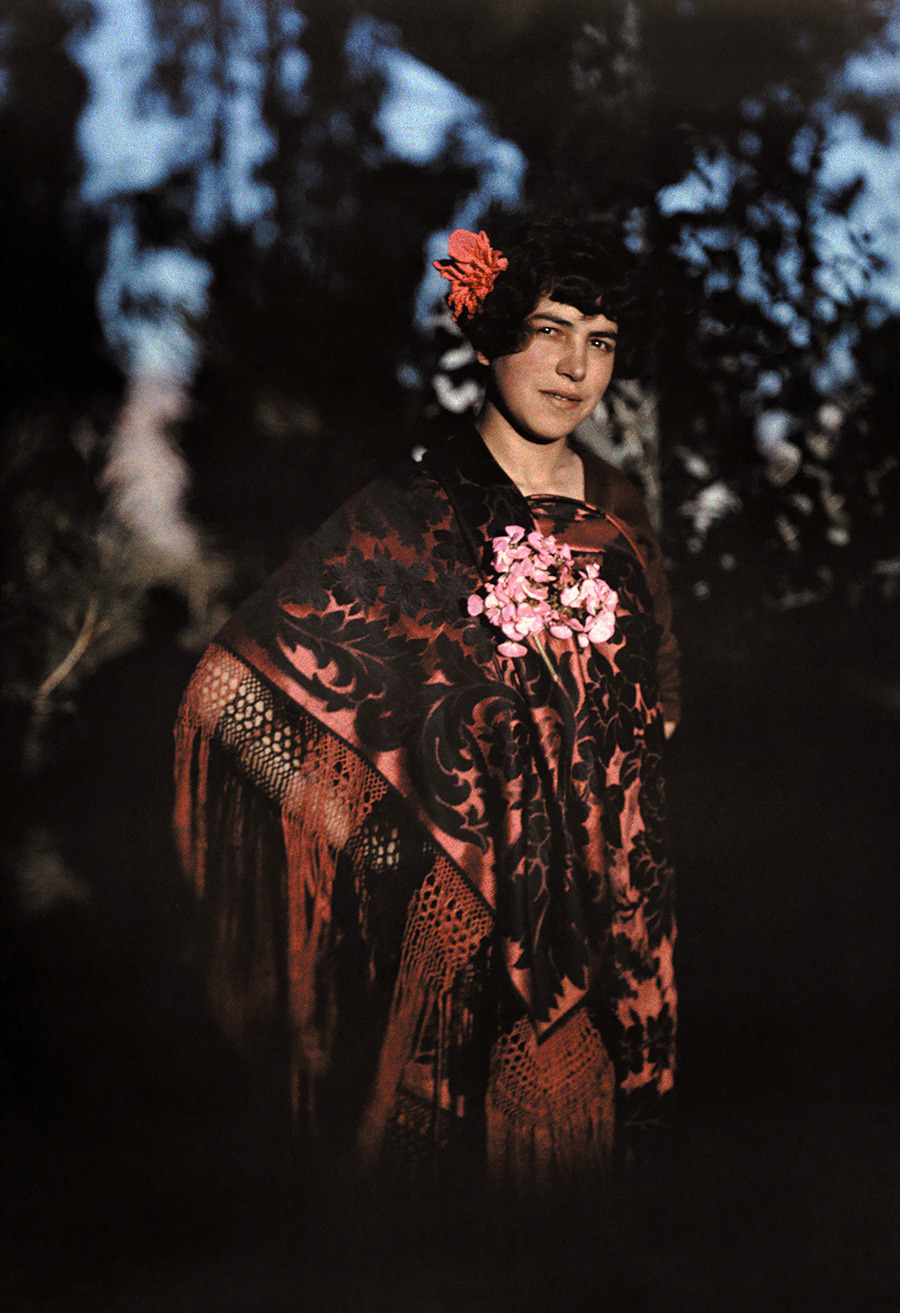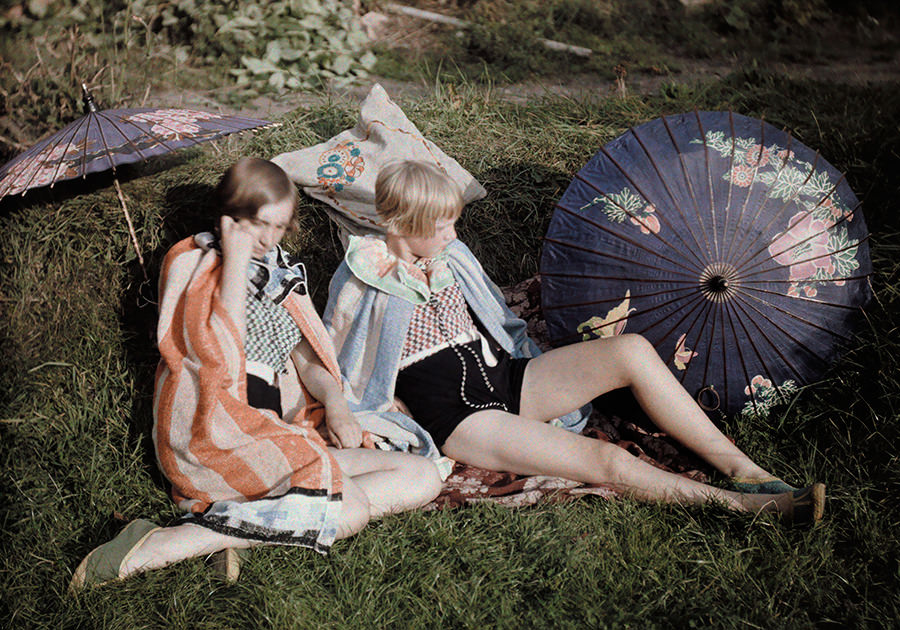The 1920s ushered in a wave of change and nowhere was this more visible than in women’s fashion. Gone were the restrictive corsets and long, heavy skirts of earlier years. A new, modern style emerged, one that favored ease and simplicity. We get a wonderful look at these styles as they were actually lived in, thanks to photographers like Clifton R. Adams.
Clifton R. Adams, who worked for National Geographic between 1920 and 1934, traveled extensively across the United States, Central America, and Europe. He captured countless moments of everyday life in villages and the countryside. Along with hundreds of black and white photos, Adams produced 30 albums of Autochromes, an early color process. These stunning color images show the fashion of the time just as people wore it daily.
Looking at Adams’s photographs, you see the defining shape of the 1920s dress. It featured a straight, column-like silhouette that hung loosely from the shoulders. The natural waistline disappeared, replaced by a dropped waist that sat around the hips. This relaxed fit allowed for much greater freedom of movement compared to the fitted styles before.
The hemlines rose during this decade. While they didn’t start high, by the mid-1920s, dresses often ended below or right at the knee. This change felt quite modern and allowed women to move more easily, whether walking through a European village or a bustling American town, scenes Adams frequently captured.
Read more
The fabrics used reflected the desire for comfort and flow. Light materials like silk, rayon (a new, artificial silk), and chiffon were popular, especially for dresses that might be worn during the day or for casual outings. For more practical everyday wear in villages and countryside settings, cotton and wool were common.
The color in Adams’s Autochromes reveals the palettes of the era. You see soft pastel shades like dusty rose, light blue, and mint green, alongside more vibrant hues. These colors brought a sense of life and modernity to the simple dress shapes.
Day dresses, as seen in many of Adams’s photos of women in their daily routines, were typically simple and comfortable. They often had a modest neckline, like a simple round or scoop neck. Sleeve lengths varied, from sleeveless to short flutter sleeves or longer, simple sleeves.
Decoration on these everyday dresses was usually understated. Belts worn low on the hip were common, often just a simple fabric tie or a thin leather strap. Some dresses featured subtle pleating, gathering, or small embroidered details.
Hats were an essential accessory for women in the 1920s. The cloche hat, a close-fitting, bell-shaped hat pulled down low on the forehead, was incredibly fashionable and practical for everyday wear, shielding the face. Wider-brimmed hats were also worn, especially in rural settings captured by Adams.
Footwear was chosen for comfort and practicality. Low-heeled shoes were standard for daytime. Styles like the Mary Jane, with its characteristic strap across the instep, or simple low pumps were common sights on the feet of women going about their day in the scenes Adams photographed.


